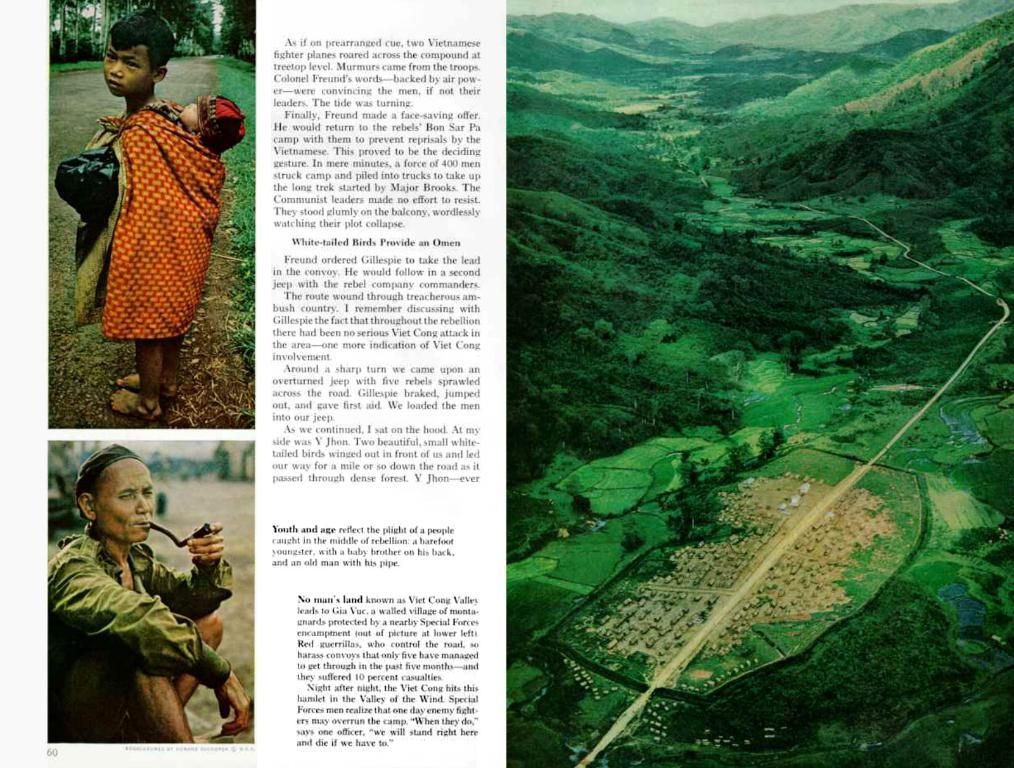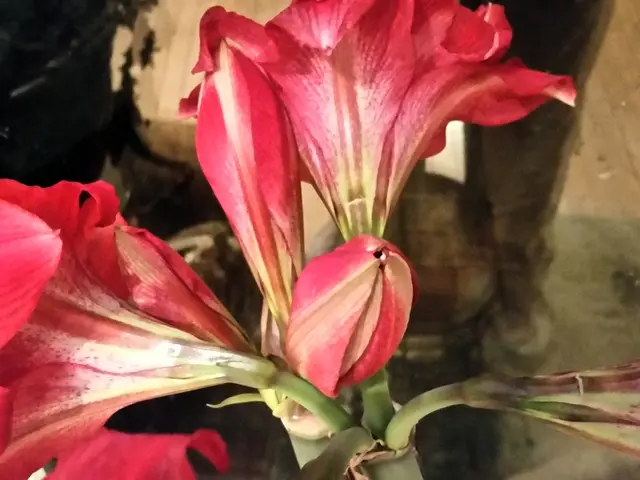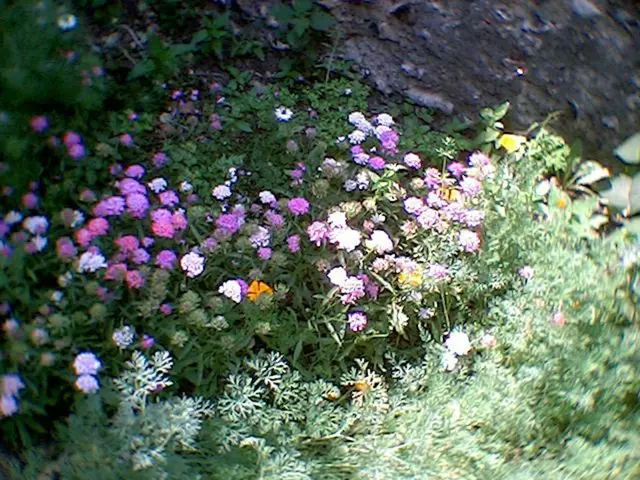Plant Pot filling nightmares: Avoid these 3 materials at all costs! 🎉
Avoid placing these items at the planter's base, as garden specialists advise:
crushing the flower fest dreams of many, the team at our platform is here to warn you about the terrible trio of planter no-no's: garden soil, polystyrene, and gasp non-permeable pot liners! Sounds familiar? Well, buckle up, garden enthusiasts, and let us guide you through the murky world of disastrous planter fillers.
A boggy bed for your blooms? 🌱
What better way to grow your thriving plant heaven than by using your own garden soil, right? WRONG! garden soil is often compacted when put in a container, leading to poor drainage and maybe even drowning your little greenies.
Why take this risk? Instead, go for a top-notch potting mix that'll encourage roots to grow and plants to prosper. Need something more affordable? How about using lightweight drainage materials like crushed gravel?
Polystyrene: looks so innocent, yet so deadly! 🐍
Although they are lightweight and seem like a clever solution, styrofoam or polystyrene can break down over time, leaving a mess in your garden and creating a headache for your plants. Plus, they ain't exactly great for Mother Nature, are they?
So, instead of endangering your precious foliage, opt for long-lasting, eco-friendly alternatives like coir, pumice, perlite, or vermiculite to ensure your plants thrive without creating environmental disaster. Don't be a polystyrene monster!
The forbidden liner: a hidden danger unveiled! 🙅♂️
Some gardeners may think it's a good idea to use a liner to prevent the soil from washing out. But be cautious! Non-permeable liners can trap moisture, leading your plants to drown and suffer from root rot.
Avoid the horror of root rot by choosing a liner specifically made to allow water to pass through, like a permeable fabric liner. Your plants will thank you! Don't be a victim of the liner trap!
📝 Bonus Tip: Lighten up on the pain 💥
Overfilling your planter or using heavy materials can lead to instability and injury. To make moving and rearranging your containers easy-peasy, consider using adjustable planter inserts or hollow drainage trays. Trust us; your back (and your plants) will thank you later!
Key takeaways 🌸
To ensure that you don't end up with a failed garden of weeds and rotten roots, follow this simple guide:
- Avoid… garden soil, polystyrene, and non-permeable liners
- Embrace… a lightweight potting mix, crushed gravel, coir, pumice, vermiculite, perlite, or permeable fabric liners.
- Know... the importance of drainage and proper air circulation
- Remember… that overfilling your container can lead to instability and difficulty moving plants
Happy gardening and may your flowers bloom to the heights of the most extraordinary garden dreams! 🌻💖🌱🌼🌷💕🌺🌱✨🌸☀️☔️🌿
Bot Responses
Hello there, budding gardener! I've got some sage advice from our team at the our platform to help you out. Listen closely, and let's avoid disaster in your beautiful garden!
Let me start by addressing three materials you somehow thought were good ideas for filling the base of your planters: garden soil, polystyrene, and non-permeable pot liners. If you were nodding your head, take a moment to feel the足韓国 足む repair your cognitive biases because these three are an absolute no-no!
Garden soil? Absolutely not! While it may seem like the logical choice, the compaction of garden soil when placed in a container leads to poor drainage, which can, in turn, suffocate your plants. If you've been on the hunt for ways to dispose of soil, your large planter is not the recommended avenue.
"But what about polystyrene, seems like a great lightweight option," you might believe. Au contraire, buddy! While it may appear clever, it can break down over time and make a mess in your soil. Additionally, it's not terribly eco-friendly, which I'm sure is a kick in the pants for many of you green-thumbed folks.
"Non-permeable pot liners? What's wrong with those?" you may inquire. While you may choose to use a liner in the planter above the materials you've used to fill the space underneath the soil, verify that it's permeable, or it will prevent moisture from passing through and escaping the bottom of your planter. Choosing the wrong liner can lead to your plants becoming waterlogged. If you're going to use a liner, opt for a permeable fabric liner specifically designed to ensure proper drainage.
So, what should you fill your large planter with instead of these disastrous options? Fear not, for we bring you viable alternatives!
A high-quality potting mix is all you need. It's the key to ensuring the bottom of your large planter is filled effectively.
Adaptable planter inserts are another fantastic option. They're a space-saver, allowing you to fill only a portion of the planter, which will prevent the risk of Planter Overfilling Syndrome (P.O.S.) and save you from having to lug around a heavy full planter.
Still feeling a bit confused? No worries, friend! I've got some bonus takeaways to help make your plant life even more spectacular:
Pumice, perlite, Vermiculite, and coir can all be added to your potting mix to ensure proper drainage and aeration. While many potting mixes already include some of these, you can add extra to the base if needed.
Lightweight Planter Drainage Materials like "Better Than Rocks" are also an excellent alternative to traditional drainage materials. They're made from recycled plastic, provide superior drainage and air circulation, and are reusable, unlike rocks or polystyrene.
Lastly, remember to lighten up! Overfilling your planter or using heavy materials can lead to instability and injury when moving your plants. Opt for materials like adjustable planter inserts or hollow drainage trays to ensure ease of movement.
So, go forth, and create the garden of your dreams. With this newfound knowledge, you'll be well on your way to a verdant paradise! 🌱😊🌻✨🌹🌺🌸🌿💐
Avoid using garden soil for planting as it often becomes compacted and leads to poor drainage, potentially drowning your plants. Instead, use a top-notch potting mix or lightweight drainage materials like crushed gravel.
Polystyrene may seem like a clever solution, but it can break down over time, leaving a mess and creating problems for your plants. Opt for eco-friendly alternatives such as coir, pumice, perlite, or vermiculite instead.
Happy gardening, and may your plants thrive without creating unnecessary environmental issues!








